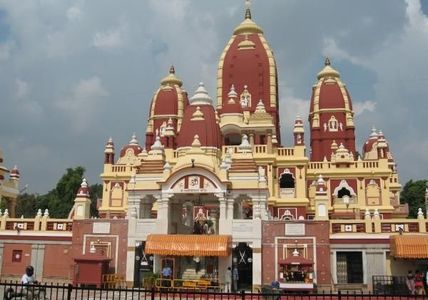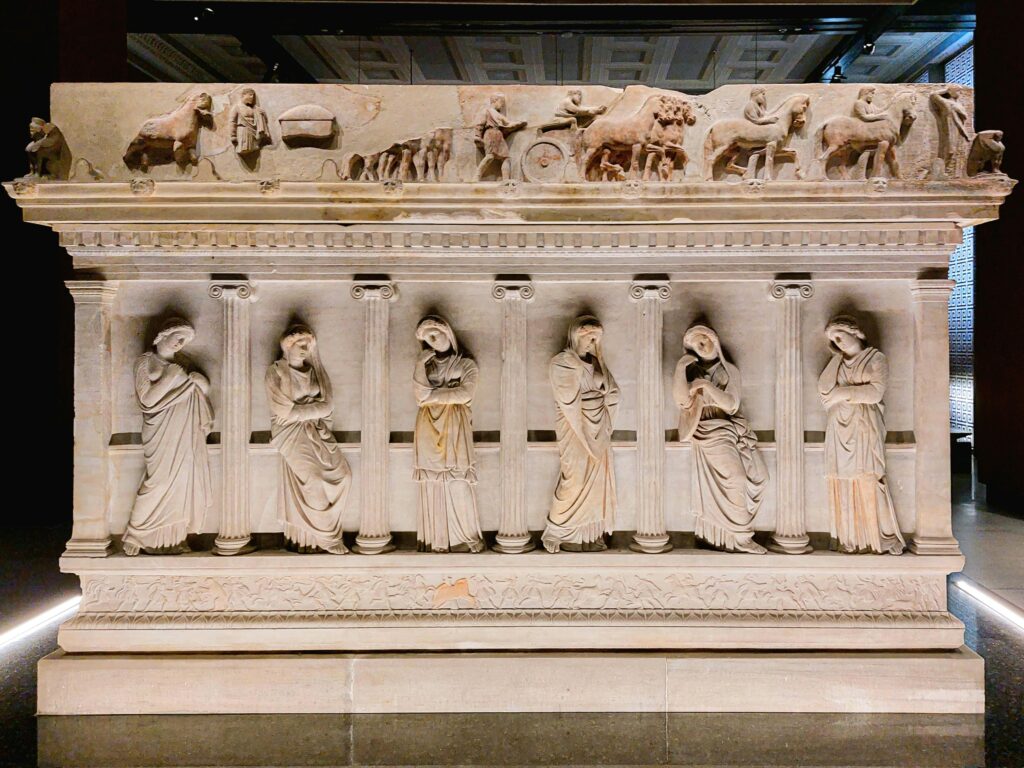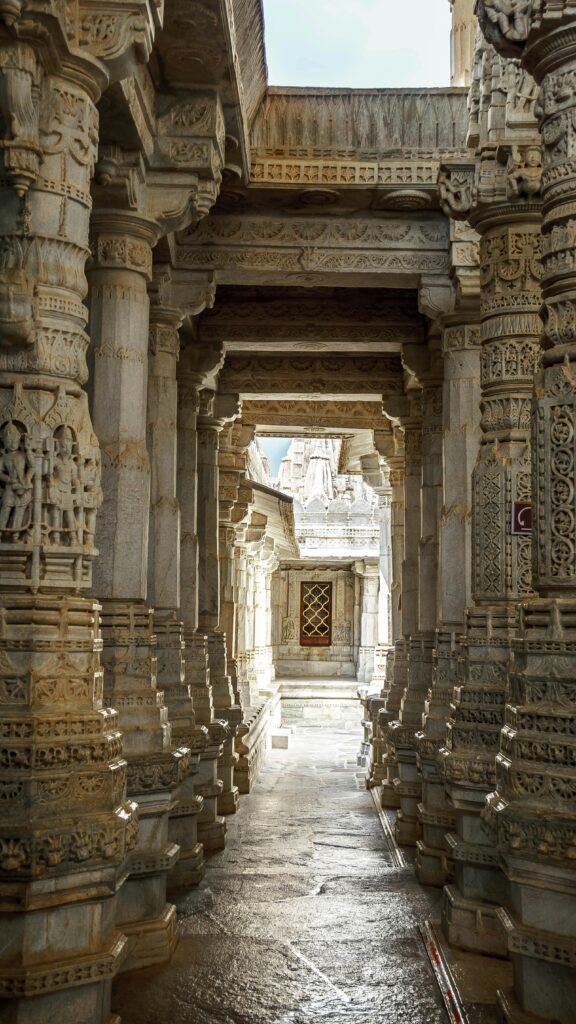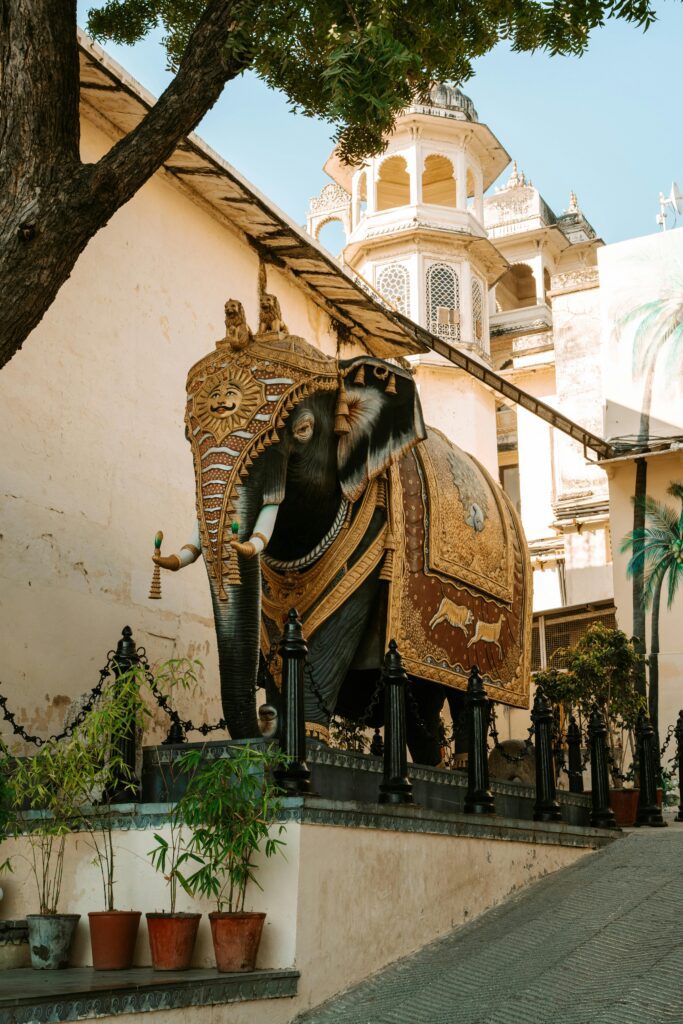
Table of Contents
Introduction: A Sacred Emblem of Devotion and Heritage
Situated in the very core of Jaipur, the Govind Dev Ji Temple is a dazzling expression of religiosity, history, and architectural excellence.
Dedicated to Lord Krishna, the temple ranks among the most significant religious and cultural centers of Rajasthan.
The religiosity which pervades its vast courtyard is more than a display of religion—it becomes a testament to the living interaction among art, royalty, and devotion which defined Jaipur over the centuries.
The Govind Dev Ji Temple is part of the City Palace complex, making it one of the most easily accessible and revered temples in Jaipur.
Its daily rituals, the rhythmic sound of bells, and the devotional chants create an atmosphere where faith meets royal grandeur.
Every brick in this temple has a story to tell—from the days of the Rajput dynasties which governed and gave permission for its construction, to modern times when thousands throng the site daily for darshan (viewing the deity).
It’s no mere shrine, but a living embodiment of the cultural heritage of Rajasthan.
History of Govind Dev Ji Temple
Origins and Royal Patronage
Govind Dev Ji Temple was founded in the 18th century by Maharaja Sawai Jai Singh II, the great founder of Jaipur.
The very genesis of the temple is intrinsically related with the piety of the Mewar and Amber royalty, the die-hard devotees of Lord Krishna.

The idol of Govind Dev Ji, the presiding deity of the temple, was initially worshipped in Vrindavan, the holy land from where Lord Krishna passed his early days.
It is said that the idol was carved from the very same divine form of Krishna watched over by his beloved devotee, Meera Bai.
During times of political turmoil in northern India, many sacred idols were relocated to protect them from invasion.
The idol of Govind Dev Ji was brought from Vrindavan to Amber (the former capital of Jaipur) by Raja Sawai Jai Singh II, who later installed it within his newly constructed City Palace complex in Jaipur.
This act not only preserved the deity’s sanctity but also integrated divine protection and blessings into the royal seat of power.
The Temple’s Role in Royal and Religious Life
Since the day when it was dedicated, the Govind Dev Ji Temple was the religious center of the Maharajas of Jaipur.
Maharajas were humble devotees of Lord Krishna and the deity himself was the real king of the kingdom.
Any royal ceremony from the coronation ceremony to religious festival and others used to commence with the performance of rituals and prayer in the temple.
Even today, members of the royal family of Jaipur maintain their devotional ties to the temple, participating in key rituals and annual festivals.
This historical link between monarchy and divinity gives the Govind Dev Ji Temple a status that extends beyond architecture—it is a symbol of divine kingship and eternal devotion.
Architectural Brilliance of Govind Dev Ji Temple
Merging of Mughal and Rajput Techniques
Architecture-wise, the Govind Dev Ji Temple is a beautiful blend of Mughal finesse and Rajput majesty.

Constructed chiefly with red sandstone and marble, the temple epitomizes the syncretic blend of Hindu sensibilities and Islamic workmanship, a characteristic in the architecture of Jaipur.
The facade boasts arched openings, decoration-laden jharokhas (balconies), and dainty latticeworks—all Mughal in inspiration, while the whole follows the classical Hindu temple plan.
The perfect assimilation stands for unity in diversity and the cultural fusion in art, reminiscent of the syncretic civilization in India.
Composition and Design
The temple’s layout is designed with a deep spiritual purpose. The main sanctum (Garbhagriha) houses the idol of Lord Govind Dev Ji, positioned so that the deity can be seen from a great distance.
The temple’s doors are wide and open, allowing sunlight to illuminate the inner sanctum during morning prayers—symbolizing divine enlightenment.
Pillared Halls (Mandapas): Large halls are held up with finely sculpted marble pillars with scenes of floral and geometric patterns.
ceilings and arches: Painted ceiling with scenes from the life history of Krishna in gilt leaf.
Marble Flooring: White marble flooring epitomizes devotion and purity, whereas the complicated patterns reflect the perpetual flow of life.
Unlike most conventional temples, Govind Dev Ji Temple is specially designed so that thousands of devotees can see the deity at the same time, emphasizing the fact that divine mercy can be accessed by all.
Symbolic Architectural Elements
The seven arches in the temple hall are aligned with the seven day aartis and are indicative of the seven stages in divine worship.
The central dome signifies heavenly consciousness, connecting the spiritual and earthly realms.

The large courtyard symbolizes expansiveness, which allows for inclusiveness in worship.
This sacred geometry embodies not only artistic greatness but also the philosophical ideal of balance between form, faith, and function.
The deity: Lord Govind Dev Ji (Krishna)
The central part in this temple houses the holy idol of LordGovind Dev Ji, the manifestation of the ever-loving and merciful Lord Krishna.
The idol, which is sculpted in black marble, stands in a poised position with the leg slightly bent – the typical form of the tribhanga (threefold) posture of Krishna.
Legend of the Idol
The idol’s history is steeped in mythology and devotion. It is said that the great-grandson of Krishna, Vajranabh, created three divine forms of the Lord based on descriptions given by Krishna’s devotees.
The one that most resembled Krishna’s face, as seen by Meera Bai, became known as Govind Dev Ji.
When the idol was brought to Jaipur, Maharaja Sawai Jai Singh II erected an imposing shrine to install it, so the presence of the Lord would sanctify the city in perpetuity.
Daily Worship and Divine Forms (Sattas)
One of its distinct features in the Govind Dev Ji Temple are the seven daily rituals also referred to as the Sattas.
Every one of the aartis display a different mood (bhava) of Lord Krishna and are sung at a specific point in the day:
Mangala Aarti – awakening of the Lord in early morning
Mid-morning Dhoop Aarti – sacred freshness
Shringar Aarti – dressing up the deity in clothes and ornaments
Rajbhog Aarti – the royal food offering
Utthapan Aarti – reawakening after repose
Sandhya Aarti – evening worship with songs and lit-lights
The Shayan Aarti – settling the Lord in bed at night
Each form of Krishna wears distinct attire, which manifests the changing moods of divinity from dawn till dusk.
Not rituals, they are religio-spiritual experiences which knit the devotees in the current of divine life.
Seven Aartis and Daily Rituals: Rhythm of Devotion
The ceremonies in Govind Dev Ji Temple are among the most disciplined and spiritually fulfilling in India.
Conducted with precision, faith, and melodic harmony that ring throughout the temple precincts.
At each aarti, devotional songs (bhajans) are sung in devotional tones by the temple musicians playing the flute, the mridangam drum, and bells, evoking the festive spirit of Vrindavan.
Scores of devotees chanting together heighten the divine energy in the entire temple atmosphere with their combined devotion in song.
The unique aspect is that in all aartis the doors of the temple are left open so that the Lord can be seen without disruption.
It manifests the philosophy behind bhakti (devotion)—that the divine is available and accessible to all who seek Him with sincerity.
They have been passed down the centuries and are carried out with the guidance of the temple trust and priests, in unbroken continuity with the ancient Vaishnavic tradition.
Festivals and Celebrations: Living Spirit of Faith
Govind Dev Ji Temple Festivals are thoroughly observed with grandeur, cheerfulness, and utter religious passion.
The temple wears a festive air all around Janmashtami, Holi, Sharad Purnima, and Kartik Purnima when it attracts scores of devotees from all over India.
Janmashtami (Birth of Krishna This is the largest festival in the temple. The whole area is bedecked with flowers, lights, and clothes and becomes a divine stadium.
Devotees fast, sing and dance till midnight―the hour when Krishna, it’s said, was born. The deity is then dressed in fresh clothes and ornaments and cradling ceremonies are conducted with great passion.
Holi Festival
During Holi, the surroundings of the temples are filled with colors, songs, and smiles. The devotees celebrate the playfulness of Radha and Krishna, playing colors and singing phaguns in the language of Braj and maintaining the tradition and religiosity of North India.
Sharad Purn and Kartik Purn
They commemorate prosperity, dedication, and divine love. Thousands of lighted lamps illuminate the temple and special prayers are conducted for divine blessings for tranquility and bliss.
They are more than rituals—they are vibrant expressions of faith, linking current generations with centuries of devotion and artistic expression.
Spiritual Meaning and Symbolism
Govind Dev Ji Temple in Jaipur City is more than a prayer site; it’s a religious site where divinity, piety, and aesthetics merge in complete harmony.
Everything — from the deity prayed day and night to its edifice — denotes a deeper religious meaning and value which represents the great philosophy of Bhakti (devotion) and Dharma (righteous living).
The Temple as the Symbol for the Presence of God
The temple is said to be the earthly manifestation of the eternal abode of Lord Krishna, the Goloka Vrindavan.
Lord Krishna, according to Vaishnava faiths, lives wherever He is loved and adored with unpolluted devotion and love.
The statue of Govind Dev Ji, which was brought from Vrindavan, depicts the very shape and form Meera Bai used to adore — divine love that knows no boundaries.
The temple thus becomes the bridge between the material world and the divine domain, where the believers experience closeness with Lord Krishna in the form of prayer, songs, and meditation.
2.Spiritual Symbolism In The Idol Of Govind Dev Ji
The statue of Lord Govind Dev Ji is carved from black marble, which represents timeless strength, cosmic wisdom, and mystery.
The smiling countenance and loving eyes of Krishna signify divine acceptance and grace, and the sitting style indicates balance, harmony, and timeless rhythm — the very same eternal principles which govern the cosmos.
Each ornament and each cloth dressing the deity are full of meaning:
Crown (Mukuta): Represents God’s rule and wisdom.
Peacock feather: Beauty and humility symbol.
Flute (Murali): The voice of the soul beckoning humankind towards spiritual awakening.
Yellow Garments (Pitambar): Show eternal truth, knowledge, and purity.
These all come together in a visual scripture — instructing the devotees in living with love, with simplicity, with devotions.
Architectural Symbolism: Harmony of Heaven and Earth
The architecture of the temple itself carries the profound message of spirituality. The combination of the Rajput and Mughal style denotes unity in diversity and depicts the transcendence of devotion over cultural and political differences.
The open courtyards are the manifestation of openness in the heart — the platform where every devotee irrespective of status can see the Lord.
The seven aartis conducted daily correspond to the seven stages of life and the seven celestial realms, reminding devotees of the soul’s journey from dawn to dusk, from birth to liberation.
Sanctum orientation controls the amount of natural light that falls at specific times onto the deity, which symbolises divine enlightenment eliminating ignorance.
In this way, the temple’s structure serves as both a spiritual diagram and an artistic masterpiece, guiding one toward inner balance and enlightenment.
The Sound and Ritual Symbolism
The rituals and songs in the temple are more than rituals — they are the tools for the lifting up of the soul.
The devotional songs sung in praise of Govind Dev Ji have vibrations which purify the heart and soul.
Ringing bells, singing the holy names, and lighting the lamp are indications of awakening the soul and removing the darkness from the soul.
The seven daily aartis’ rhythm resembles the natural process of living — sunrise till sunset, creation till dissolution — keeping the devotees in remembrance that living itself is a perpetual offering to the divine.
Global Symbol for Love and Unity
The temple is a symbol of universal brotherhood. It embraces all people — Hindus and non-Hindus, Indians and foreigners — proving that the spirit is transcendental.
The loving attitude of Lord Krishna towards his devotees represents the perennial connection we can have with the Divine at heart.
Each festival that’s observed here — notably Holi and Janmashtami — becomes a living manifestation of faith, where divine elation, affection, and unity blend into one.
The temple thus becomes an emblem of unity and imparts harmony in all those entering its holy precincts.
Spiritual Energy and Aura of the Temple
Several devotees feel a distinct divine energy the moment they enter the temple. The chanting, the incense, and the holy atmosphere create a zone of positive spiritual energy that lifts up and tranquilizes the psyche.
The temple aura eradicates karma, provides tranquility, and ignites inner passion.
One hears that the devotees praying with complete faith at Govind Dev Ji Temple are blessed with mental clarity, balance in emotions, and awakening of the soul and feel that Lord Krishna Himself blessed them.
The Eternal Message of Govind Dev Ji
At its most basic level, the religious and symbolic significance in the Govind Dev Ji Temple are three eternal truths:
Devotion is formless — True devotion to God is more important than rituals.
Beauty resides in faith — Whatever art and building springs from piety, becomes sacred.
Unity is divine — Like the temple blends Mughal and Rajput style, spirituality blends all souls together.
Hence, the temple is not only an architectural wonder — it’s a work of divine art expressing the timeless message of Lord Krishna:
“Wherever there is love, there is God.”
Visiting Govind Dev Ji Temple: A Holy Experience
Venue: City Palace Complex, Jaipur, Rajasthan.
Timings: 4:30 AM till 11:30 AM and also 5:00 PM till 9:30 PM (.
Best Time to Visit: In the midst of Janmashtami or Holi, when the temple attracts the maximum energy.
Visitor’s Tips: Walk in humility, visit at least one aarti, and experience the divine energy at the early morning prayer at the temple.
Due to its proximity to other Jaipur attractions like Jantar Mantar and Hawa Mahal, the temple also becomes a must-visit for travelers who are interested and spiritually and culturally.
Conclusion: Eternal Grace of Govind Dev Ji
Govind Dev Ji Temple is the living manifestation of faith, history, and artistic grandeur. It is more than a religious monument; it stands for the timeless alliance between devotion and divine love best reflected in its architecture and rites.
The history of the temple—embodied in the grandeur of the dream of Sawai Jai Singh II and the blessing of Lord Krishna—is the embodiment of the timeless spirit of India.
Every stone of this temple whispers tales of unwavering devotion, while its intricate carvings and Mughal-Rajput fusion architecture showcase the aesthetic brilliance of Rajasthan’s heritage.
From the rhythmic aartis performed seven times a day to the joyous celebrations of Janmashtami and Holi, the temple exudes an atmosphere of divine energy and cultural unity.
To the believers, the idol of Lord Govind Dev Ji is no mere holy figurine—it’s a form of the divine per se, a living embodiment of Lord Krishna’s timeless radiance and mercy.
The holy environment of the temple extends beyond all faiths and beckons all—pilgrims, travelers, and seekers—to serenity, religiosity, and divine experience.
Right at the heart of Jaipur, in the grandeur of the City Palace complex, the Govind Dev Ji Temple still radiates its religious majesty. Here, history meets faith, art meets divinity, and architecture meets soul.
To see the temple isn’t just a journey through history—it’s a journey inwards, towards serenity, piety, and immortal love.
